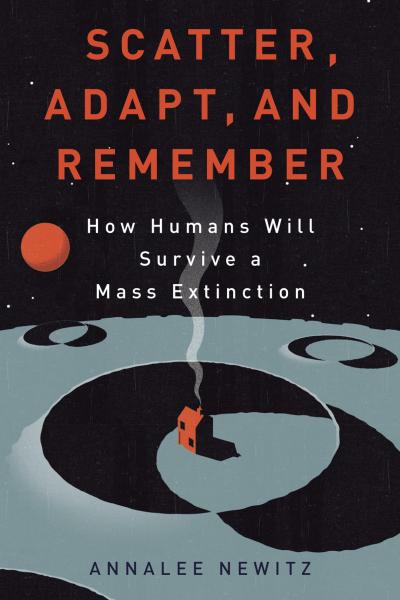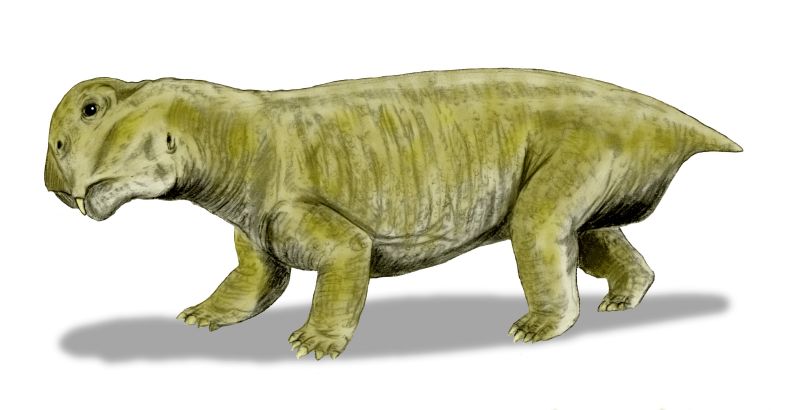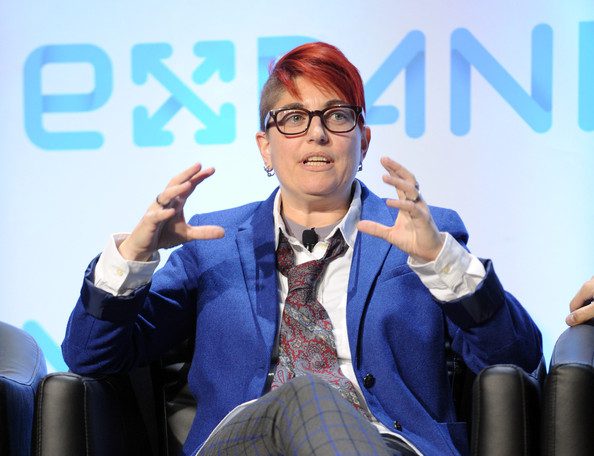
Just released in trade paperback, Annalee Newitz’s Scatter, Adapt and Remember: How Humans Will Survive a Mass Extinction does, as promised, focus on helping avoid future disasters, delving into everything from tsunami simulation to growing cyanobacteria for living cities. But it also provides, with great gusto, a history of past mass extinctions and an entire section on taking the long (extremely long) view. The book is incisive, sharp, and reader-friendly in its approach, heavy on facts in a way that’s entertaining and shows Newitz’s enthusiasm and expertise on the subject. In addition to being the editor-in-chief at io9.com, Newitz has been published in a slew of respected publications, including Wired, Smithsonian Magazine, the Washington Post, and New Scientist, and the book itself was a finalist for a 2013 Los Angeles Times Book Prize.
Although I love Scatter, Adapt and Remember, I’m more pessimistic about our own chances of survival amidst a growing global warning threat that has yet to elicit any meaningful action from governments and corporations. Like many people, I’m heavily invested in these issues—not just the slow slide into environmental catastrophe but through sharp shocks like the Gulf oil spill, which spiraled non-stop through our minds here in North Florida for many months, while we were helpless to do anything about it.
It’s a situation that has bled into my Southern Reach trilogy, a mix of science fiction, eco-fiction, and spy fiction. One of the simplest situations in the novels is the fundamental quandary faced by scientists trying to combat what’s going on in a mysterious place called Area X. Whatever has sealed off Area X from the rest of the world is—while proving fairly deadly to humans—eradicating pollutants and reversing other human-made impacts on the environment. So, is it right to try to destroy Area X?
Alan Weisman, in his books and lectures, has said that we need to imagine an Earth without us on it—not as a wish that human beings go extinct, but because the severity of the problem requires wrenching us out of current modes of thinking. This, to me, feeds into Jean Baudrillard’s thoughts that we live within a hegemony that encompasses all things, a deadly situation in which the real is immediately rendered unreal and our problems multiply as a result. To “break through,” so to speak, we’re going to have to, among other things, radically reimagine our relationship with the natural world as something more immersive than mere stewardship.
I was curious to see what Newitz might say about these topics—and how she might put it in perspective, given her research into an extremely long view of Earth’s history. It may sound odd to say this but having a conversation with Newitz about our mass extinction has made me feel a little better about our chances.
***
The Rumpus: In doing research for the book, do you see evidence of an evolution or devolution of humankind’s view of the natural world and our place in it? Perhaps even in the kinds of terminology used?
Annalee Newitz: Obviously it depends on how you define a word like “evolution,” because of course we have been evolving—both biologically and culturally—in relation to the natural world for hundreds of thousands of years. And there are definitely recurring themes in humanity’s relationship with our environment. The biggest is probably adaptation, because humans are incredibly good at adapting to new environments in relatively short periods of time. The ancestors of Homo sapiens started leaving Africa over one million years ago, moving from warm, tropical climates into the freezing wilderness of Europe and the desert ecosystems of the Middle East.
One reason that we’re so adaptable is that humans are excellent tool users and homebuilders. When our environment doesn’t provide us with something that we need, we try to make it ourselves out of whatever is available, whether that’s rock or wood or ore or DNA. Eventually, humans invented agriculture, which could be understood as a way of turning the natural world into a tool for our use. There’s evidence that we have been domesticating crops and animals for at least 15,000 years, adapting ecosystems to our preferred way of life.
It’s only a slight exaggeration to say we haven’t progressed much beyond the invention of agriculture when it comes to our view of the natural world. We have converted huge swaths of land and ocean into human habitats where we live and grow food and harvest energy. But there’s been a sea change in the past century. About fifty years ago, we discovered the carbon cycle—a long-term set of chemical reactions that govern climates based on how much carbon is free in the atmosphere. At that point, it became clear that humans were affecting our environments far more profoundly than we realized. By releasing so much carbon and greenhouse gas into the environment, we’re making long-term changes to every aspect of the natural world.
So to get to the heart of your question, it’s only been in the past two generations that we truly understood the impact our civilization has had on the natural world. To our credit as a species, we have turned this obscure scientific fact about carbon cycles into one of the most important political issues of the 21st century. But I don’t know if most people have truly taken on board what this says about our place in the natural world. It doesn’t mean that humans are dominating the Earth, ruling over all of nature. In fact, it is a reminder that we are only a tiny part of nature, at the mercy of a system whose operations predate us by billions of years, and will continue billions of years after we’re gone. The fact that we have been able to perturb the carbon cycle with our industrial revolution is evidence of how vulnerable we are—because when we destroy our environments, we destroy our food and energy supplies. In short, we destroy ourselves.
I think we’re still stuck in that agricultural mindset, where we imagine that we can shape the Earth. Sure, we can do that. But the Earth has the power to shape us much more powerfully. To survive climate change, we’ll have to realize how dependent we are on our ecosystems for our own survival.
Rumpus: Can science alone solve the issue of a potential mass extinction due to the human causes? Is the rate of positive change sufficient?
Newitz: Part of what I wanted to do in my book was point out that we have almost reached the point where we can prevent a mass extinction with the science and technology we have today. We can build carbon neutral cities. With enough money and international coordination, we can push incoming asteroids out of Earth’s path. We might even be able to bring back extinct animals in the lab. The problem really isn’t scientific—it’s cultural. We aren’t yet able to coordinate ourselves as a global civilization to do something simple like bring food to a famine-stricken region. We can actually use current satellite technologies to predict where famine will strike next, but we can’t get food there—usually for political reasons.
So science alone cannot solve this problem. It’s something that we can only tackle by bringing science together with culture, economics, and even politics.
Rumpus: If you were in charge of Earth, what kinds of policies would you enact worldwide to stave off the next mass extinction?
Newitz: My first goal would be to reduce the perturbation in the carbon cycle. That would mean using carbon neutral sources of energy, and changing our agricultural practices to be less disruptive and polluting. I’m not talking about a policy here so much as changing the way our infrastructure works. That’s why I’m so fascinated with changing the way we build cities, because they are the most developed forms of physical infrastructure for human habitation. I would want us to start our quest to survive mass extinction by rethinking how we build cities. Cities should be commonplaces of production, rather than consumption—they should be producing food, and fuel. Cities should function more like ecosystems, or even metabolisms. When we build, we should be thinking about how we can integrate into the ecosystems around us, but without sacrificing all the niceties of civilization like good restaurants, concert halls, and high-speed Internet access. I’m saying that partly tongue-in-cheek, but I’m also deadly serious. The future of technology is sustainable ecology.
Rumpus: How much of what we do currently to protect the environment is some form of magical thinking?
Newitz: Haha—I hate to be cynical about this, because it’s true that every little bit helps. That said, a lot of people buy products with “green” in the brand name, but make no attempt to understand what it would really take to live sustainably. I think one of the most pernicious examples of magical environmental thinking is the anti-GMO movement.
There are plenty of publicly-funded organizations and nonprofits that are trying to develop GMO crops that could help feed people in developing nations by producing disease-resistant or drought-resistant strains of staple crops like cassava or bananas. GMO agriculture will probably save the world in this century. But in the developed world, where few people are haunted by the specter of famine, people are free to fetishize heirloom tomatoes and worry about the provenance of what sits on their dinner tables. The fact is that humans have been shaping the genetics of what they eat for thousands of years. Genetic engineering simply speeds up the process that used to take generations. Preventing people from getting things like golden rice or disease-resistant cassava destroys human life, and does not spare the environment in any way.
Rumpus: Is the development of a parallel virtual world existing side-by-side with the real world a net gain or net loss for finding solutions to these issues? (I’m thinking of both the factionalism online and the amount of time spent on the computer instead of experiencing the world.)
Newitz: A lot of environmental and biological science depends on technology to progress. Partly I’m talking about massive server farms that help people crunch genetic data—or atmospheric data. But I also mean the scientific collaborations that the Internet makes possible, where scientists in India and Africa can work with people in Europe and the Americas to come up with solutions to what are, after all, global problems. Using that virtual world that you mention, a scientist in Japan can conduct an experiment using a special facility in California, watching the entire thing via a live stream—and possibly controlling the experimental equipment remotely. We can use that same kind of technology to control a robot on Mars.
You also mentioned factionalism online, and I’m not sure ultimately whether it’s fair to blame the Internet for things like climate denialism. We’ve had political debates over the environment for hundreds of years, and debates over science for thousands. There’s a joke that one of the first ways people will use a technology is to create pornography. But really, the very first way people will use it is for having arguments. Porn only comes after flame wars.
Rumpus: Has your research increased or decreased your own anxiety about the mass extinction we’re currently in the middle of?
Newitz: To be fair, if we are having a mass extinction, we’re in the early stages of it. I think it’s knowing facts like that which has made me less fearful about the future. Mass extinction is a long, complicated process that we are just now beginning to understand – and likewise, we are just beginning to understand how we might prevent one. Even though I now know that it’s likely the Earth will suffer through mega-volcanoes or meteor strikes that could take out millions or billions of people, I feel less anxious about it because I actually understand what the threats are. There’s nothing like researching something exhaustively to make it less terrifying. I think it’s the process of demystification, and realizing that we are not talking about some supernatural nightmare—we’re talking about a natural process that the planet has gone through before, and which animals have survived before.
Rumpus: Does study of this sort of thing help you take a longer view? Does it change your goals, your approach to life?
Newitz: I definitely take a much longer view now. Sometimes it’s hard to take everyday concerns seriously when you think about vanished ecosystems that existed 300 million years ago and were eradicated by giant explosions. My goals haven’t changed, because my goal has always been to save the world! At the same time, I try to be realistic and pragmatic. I have a lot of hope for humanity as a species, but obviously as individuals we can be extremely flawed. We may have to go through some very terrible times in the near future, even if we ultimately survive as Homo sapiens.
Rumpus: Would a large meteor striking the Earth at this point help us in the long-term?
Newitz: That’s definitely one theory. In fact, the early demographer Thomas Malthus believes that the only way the human population would ever check itself was by running headlong into a disaster, like a pandemic or famine. Sometimes we get so frustrated with the slowness of human political processes that we wish a giant flaming rock would solve the problem for us. But I think in the long run, it will be better for us if we solve our problems without suffering through some terrible disaster. I like the idea of change without Apocalypse.
Rumpus: You’ve mentioned loving the early Triassic, and that there were so many weird creatures, including weird reptiles. Could you tell me more about your favorites?
Newitz: The early Triassic was a period when the planet was recovering from the worst mass extinction it had ever known—that was the end Permian extinction, where climate change caused in part by mega-volcanic eruptions wiped out ninety-five percent of life on Earth. It took about ten or twenty million years for the planet’s ecosystems to stabilize. During that time you saw a lot of weird, out-of-balance ecosystems where, for example, crocodile-like predators ripped the crap out of each other along the coasts.
All of the planet’s continents were united in one mega-continent called Pangaea, and inland there was really only one four-legged animal. It was called Lystrosaurus, and it was a synapsid, or a mammal-like reptile. Basically it looked like a pig crossed with a lizard, and it lives mostly by burrowing and digging for food underground. They were humble little guys, and nobody is quite sure why they survived in such great numbers, and why they came to dominate the world of land animals for many millions of years. Still, it’s a great model for survivor species because Lystrosaurus made it through one of the worst periods in environmental history by spreading out into many new places and adapting to them. They are definitely my heroes. Around this time, dinosaurs were also evolving from small, dog-sized animals into larger and larger creatures who would eventually become the giants that we know from the Jurassic and Cretaceous periods.
What I love about this period is, in a sense, its instability. Many ecosystems rose and fell, almost as if entire environments were competing with each other through time to control the planet. But the devastation of the end of the Permian was so great that it was difficult for new ecosystems to rise—some had too many predators, some had other problems. Eventually things stabilized, and in fact the Jurassic and Cretaceous periods which followed the end-Triassic mass extinction (yep, there was another one) were among the most ecologically stable periods on Earth. The planet went over 100,000 years without any major perturbations, and the dinosaurs had a giant party until that asteroid struck.
Rumpus: What organisms living today do you think far future people might think were the most outlandish?
Newitz: Probably amphibians. They are dying out like crazy, and frogs and salamanders may be largely extinct by the end of the twenty-first century. Imagine an animal that begins its life in the water, but ends it on land—already, that’s pretty weird. But, also, a lot of them are incredibly tiny and look wildly improbable. They have funny little toes, they stretch their throats into weird bubble shapes when they croak, and some of them are poisonous to the touch. I think kids from the twenty-second century might mythologize amphibians the way kids today mythologize dinosaurs.
Rumpus: What’s the best animal to be in the next few hundred years? Extinction-proof despite rising temperatures, etc.?
Newitz: When I first started researching my book, I talked to a British geologist named Michael Benton, who has studied the end Permian extinction extensively. I asked him basically this question, based on what he’d learned from studying the worst mass extinction in the world. He said survivor species tend to have huge populations, so they can afford to lose many individuals and still survive as a species.
They also tend to be small. If you’re small, you need less food—which is great in a situation where famine is everywhere. But also I think small animals can escape from many kinds of natural disaster more easily. There are just more places for them to hide, and more ways for them to find safe habitats. So this means that rats are set up to rule the Earth, but most of us already knew that. Now you know why.
For the same reasons, I think that humans are also set up to survive. We’re not as small as rats, but we make up for that by being intelligent enough to make our own hiding places and to adapt to new habitats, even if they are changing very quickly. We have an enormous population, and can afford to lose billions of people without suffering very much as a species. Indeed, some would say losing five billion people would be good for the planet—I disagree with them, but can’t deny that we would do just fine if there were two billion of us or even one billion. So humans are a great survivor species but our survival will be pretty grim if all of the plants and animals we depend on die out. That’s why any human survival strategy has to include a plan to maintain our environment roughly in the state that it’s in now.
Rumpus: What do you make of a statement like, “We must be able to imagine a world without human beings in order to imagine a future that includes us”?
Newitz: That sounds a lot like something that Alan Weisman says in his new book, Countdown. After he wrote The World Without Us, he decided to write about what the world would look like with us in it, living in balance with nature. Though I agree with him on many points, I disagree that we need to contemplate eliminating ourselves in order to move forward. Sure, I think a good dystopian story can serve to steer us on the right path toward a better world. But we also need stories that offer solutions to our problems that are realistic, and workable today. Imagining the world without us is a recipe for despair and paralysis. I actually think it’s more helpful to imagine the world before us, to look back at those unstable ecosystems of the Triassic and realize that were in another phase of unstable ecosystems. Knowing that, demystifying our situation as it were, makes it easier to think about solutions. We are not looking into the unknown. The only thing unknown about the situation is how we’re going to fix it, and when.
Rumpus: Looking at Venus, with its hothouse environment, and thinking of prior mass extinctions on Earth, are we headed toward a radically new version of life on Earth in the next million years?
Newitz: We are headed to a radically new Earth, at least from our perspective. But from the planet’s perspective, this is nothing new. As the geologist Peter Ward is fond of pointing out, we are actually heading back to a time kind of like the Miocene. The Miocene ended about 5.5 million years ago, and it was the last time that the planet had no icecaps. As an aside, I would note that icecaps are actually an aberration in the history of Earth—so really, our era is much more of a radical deviation than the Miocene was. If we return abruptly to a Miocene-like climate, it’s reasonable to think that we would experience a lot of extinctions, and maybe even a mass extinction in the long term. Would the life on Earth be radically different? Of course we can’t say for sure, but I think a lot of it would look familiar. Like a lot of people, I worry a lot about whether marine mammals would survive, especially whales. Ocean acidification is one of the major killers in climate change events, and that makes the ocean a very inhospitable place.
Rumpus: Any related fiction or nonfiction in particular that you think readers of your book would enjoy?
Newitz: In terms of fiction, there are a number of writers who are thinking about the future of the environment whose work complements mine. Kim Stanley Robinson’s novel 2312 is a great example, as is Tobias Buckell’s novel Arctic Rising. I have a whole chapter in my book about the work of Octavia Butler, whose ideas strongly influenced mine. The biological cities in Kathleen Ann Goonan’s Nanotech Quartet series are similar to what I describe in my book, although of course I hope that these future cities won’t go nuts the way hers did. And of course, your own work in the Southern Reach trilogy deals a lot with transitional ecosystems and the weirdness of nature in ways that I think can help people understand how much the environment changes over time.
There’s an equally long list of nonfiction I could mention, from the work of Peter Ward, which I already mentioned, to Elizabeth Kolbert, who just published a book called The Sixth Extinction, based on her famous essay in The New Yorker. A great companion book to read with mine would be Lewis Dartnell’s The Knowledge, which is about how to rebuild civilization after a massive pandemic. But I was also influenced by a wide range of thinkers, from Rebecca Solnit, who has written very eloquently about how humans care for one another in the wake of disaster, to the evolutionary biologist Joan Roughgarden, whose book The Genial Gene explores the evolutionary value of cooperation. Basically, one of the not-so-hidden themes in my book is that when push comes to shove, humans will help each other build a better world—even if they have to do it in the ashes of the previous one. We have evidence from both science and history that this can happen. I hope it will happen again.








